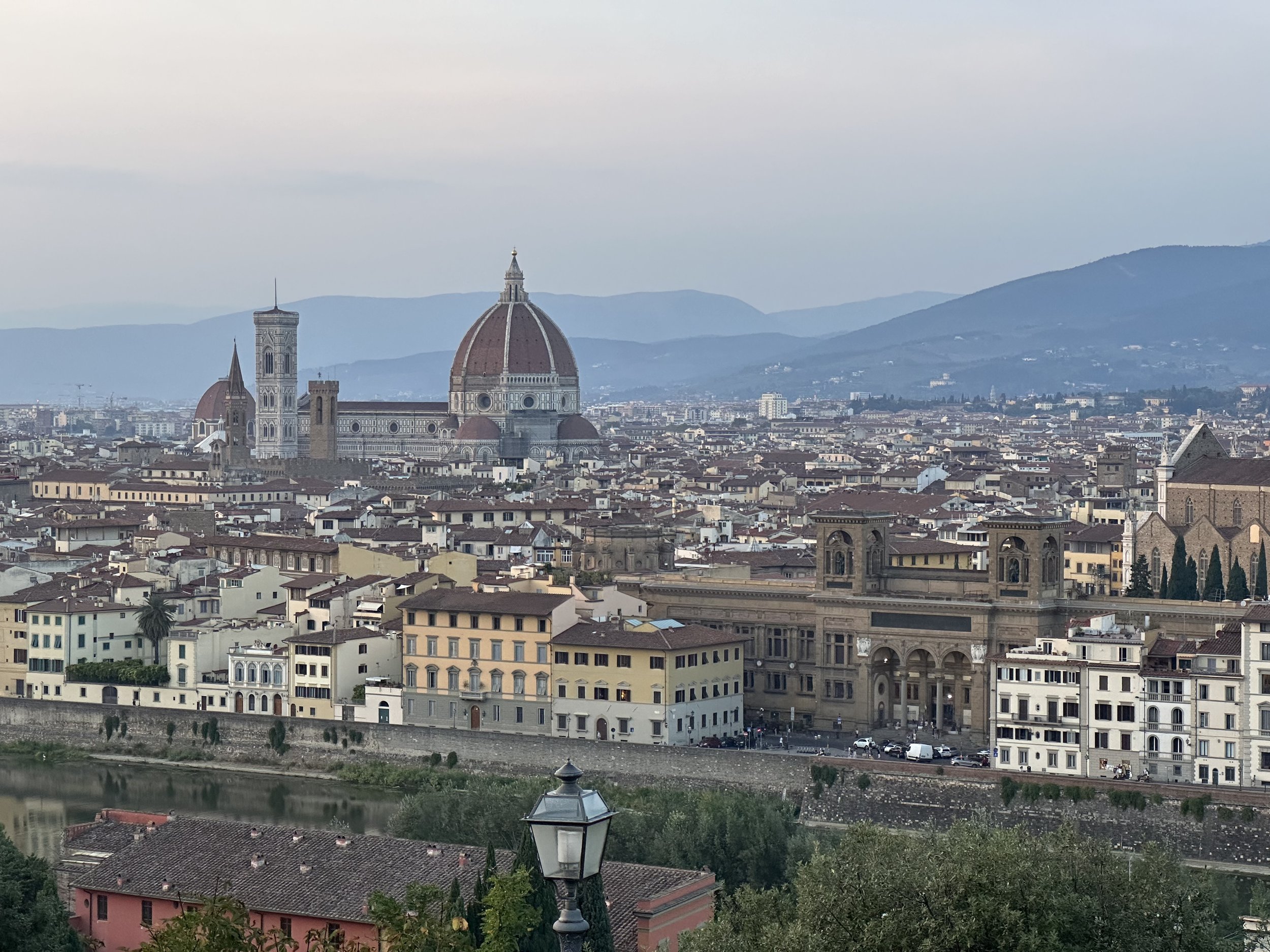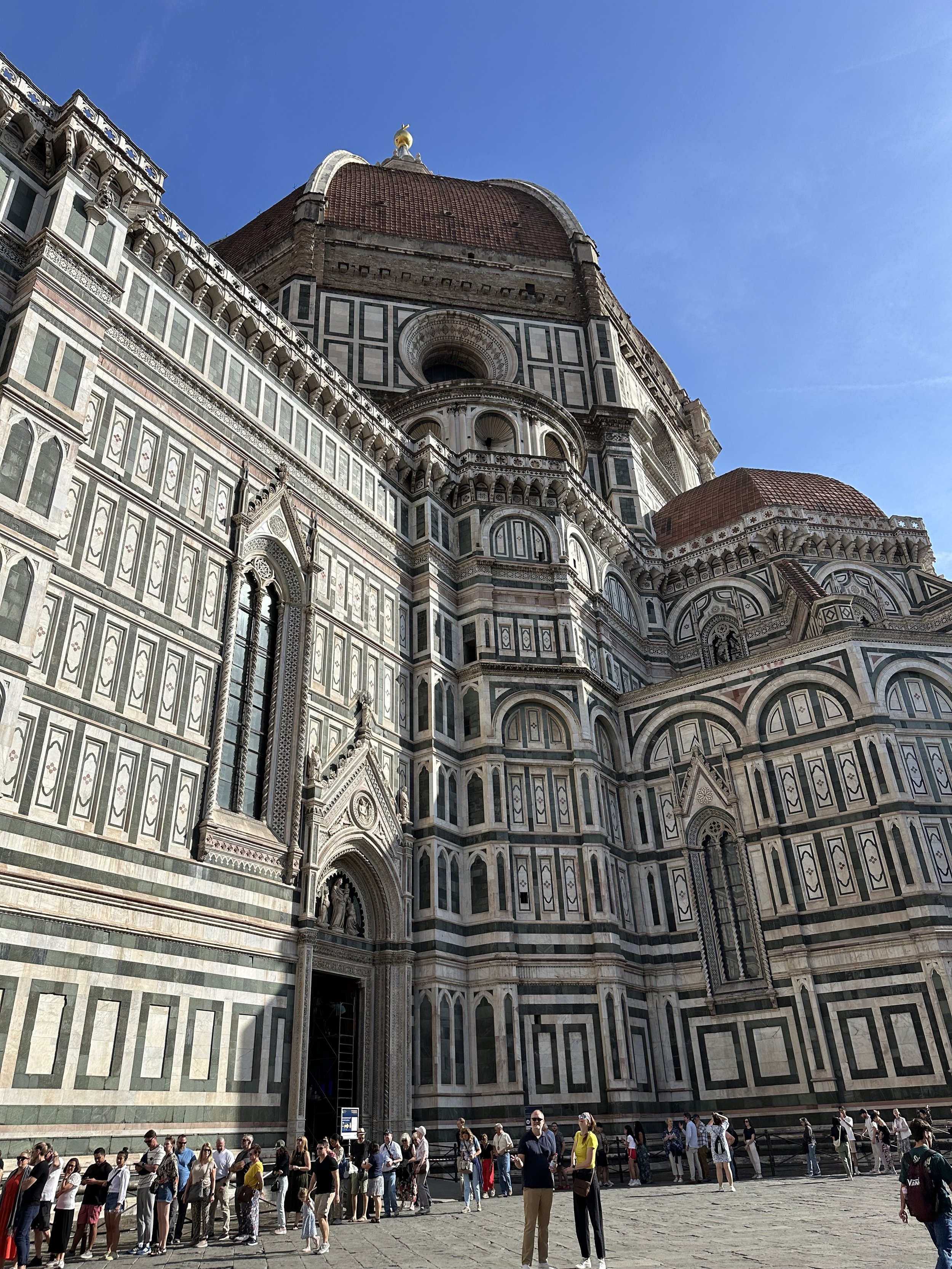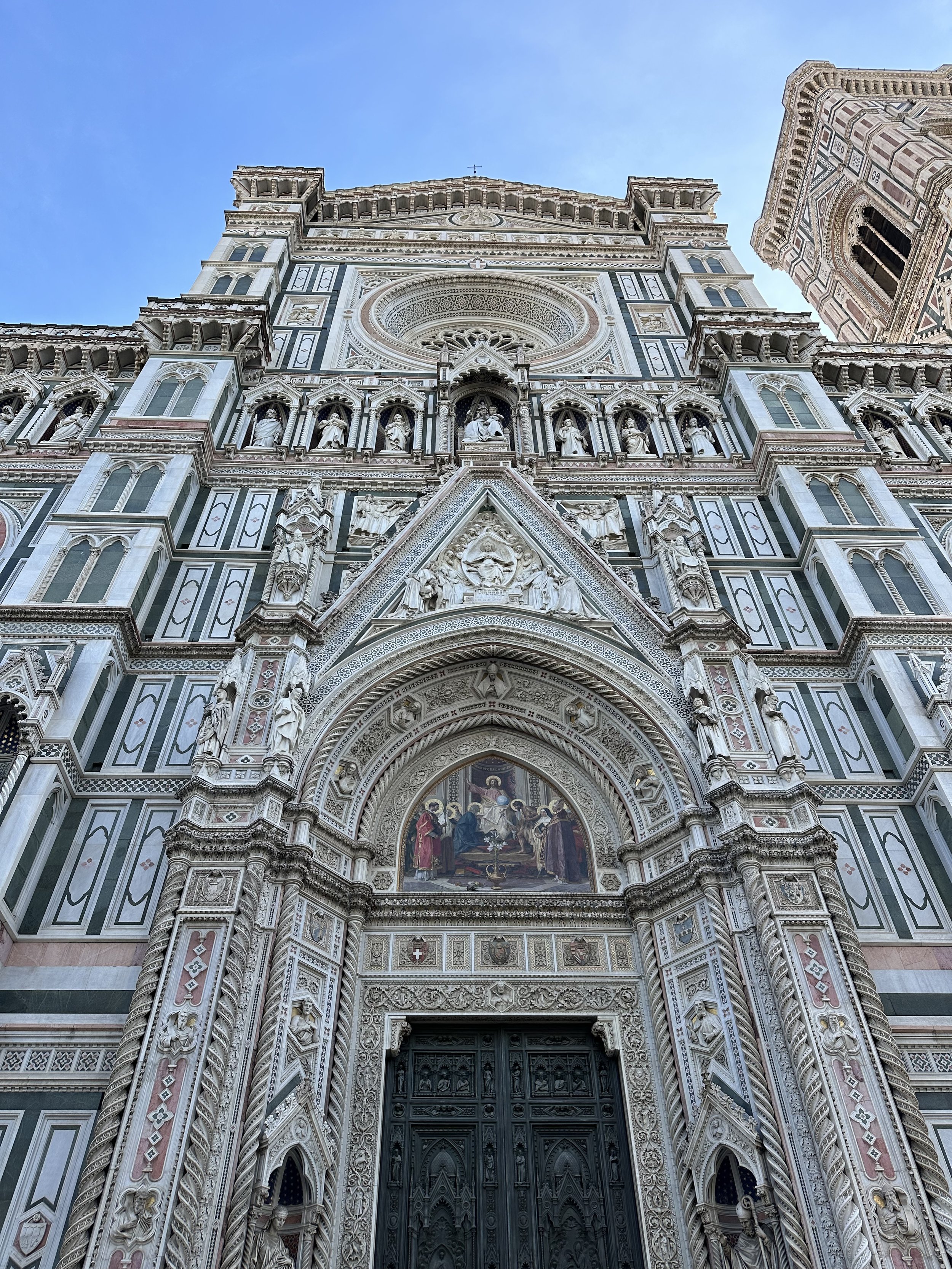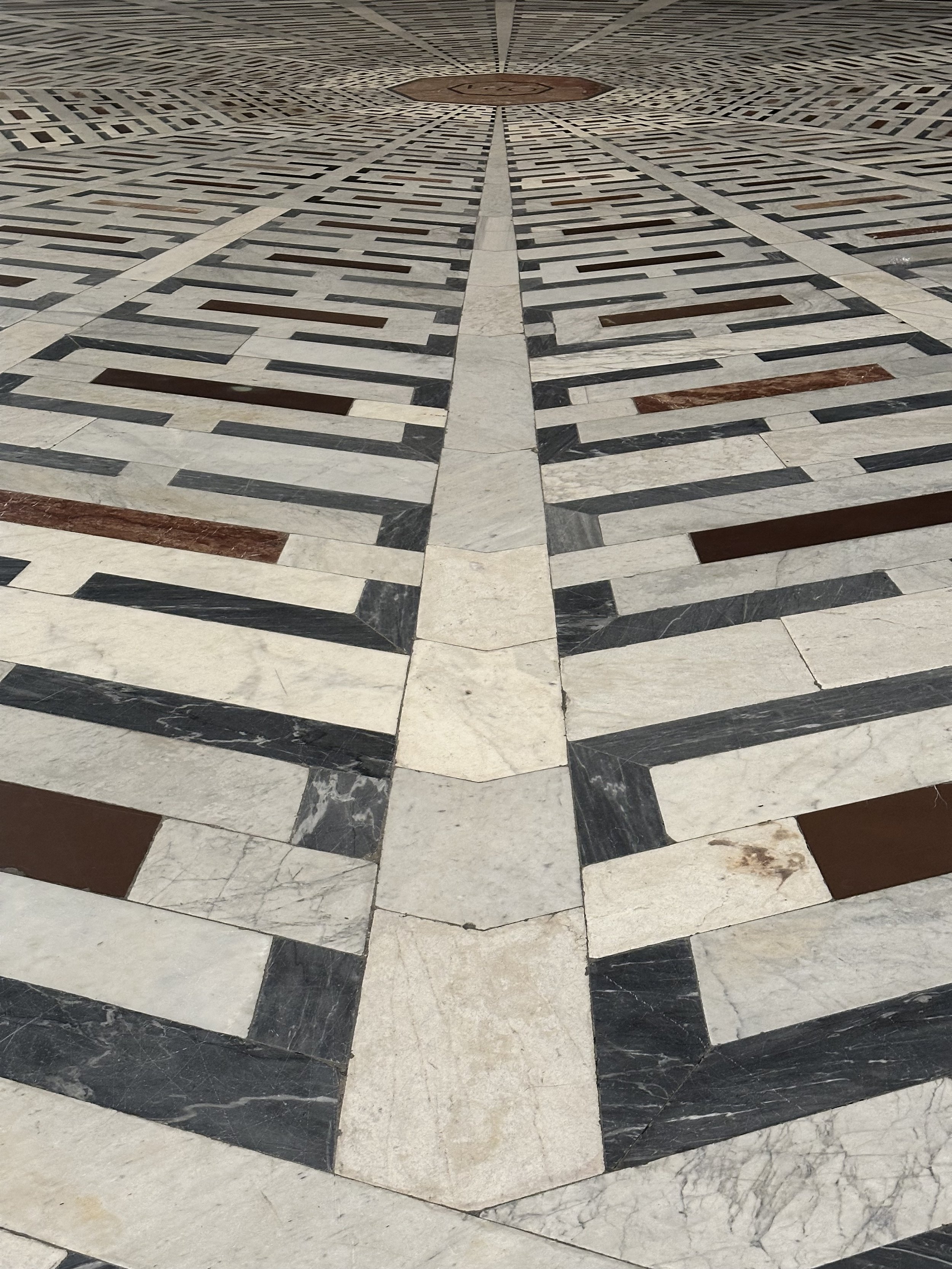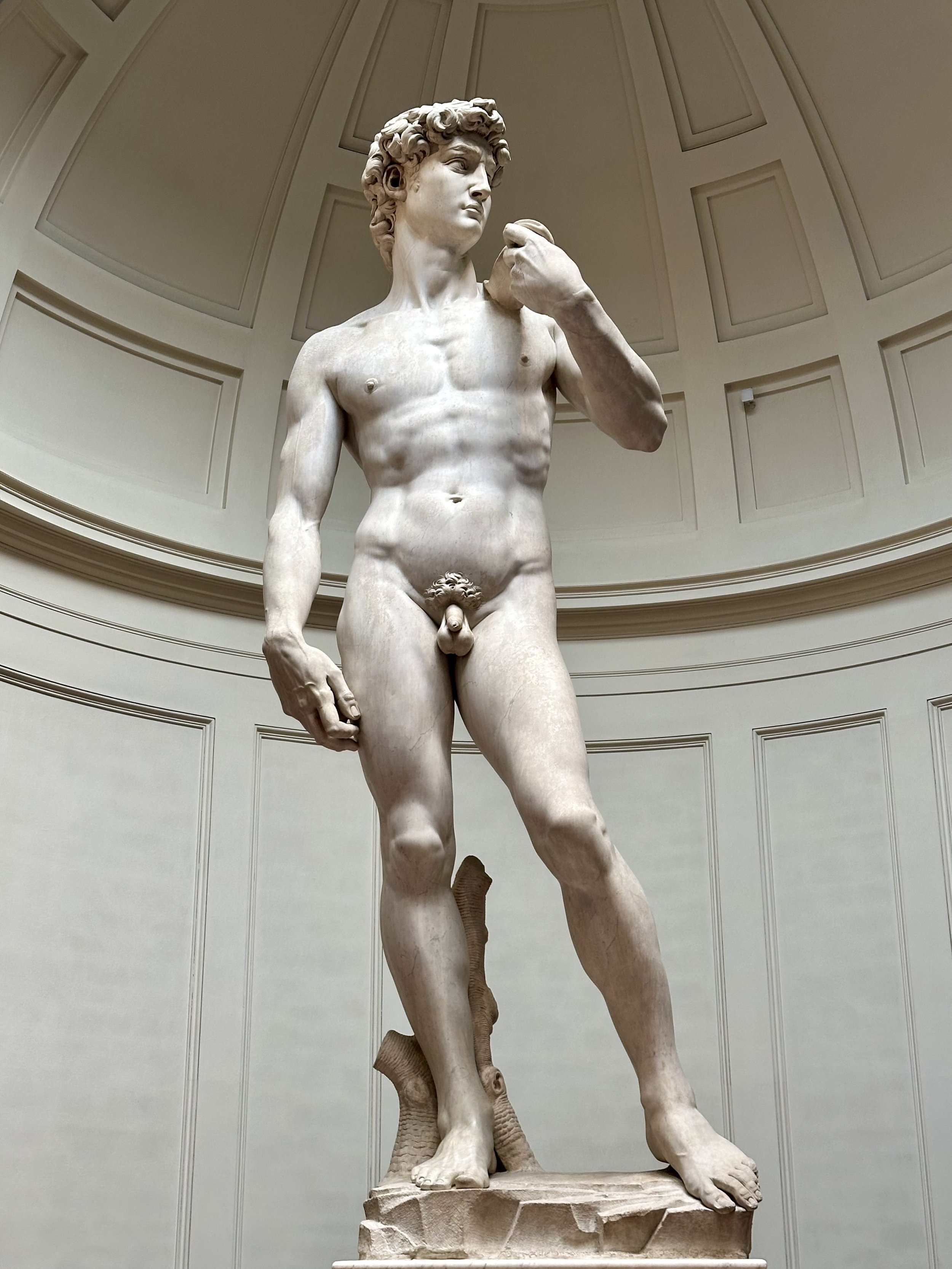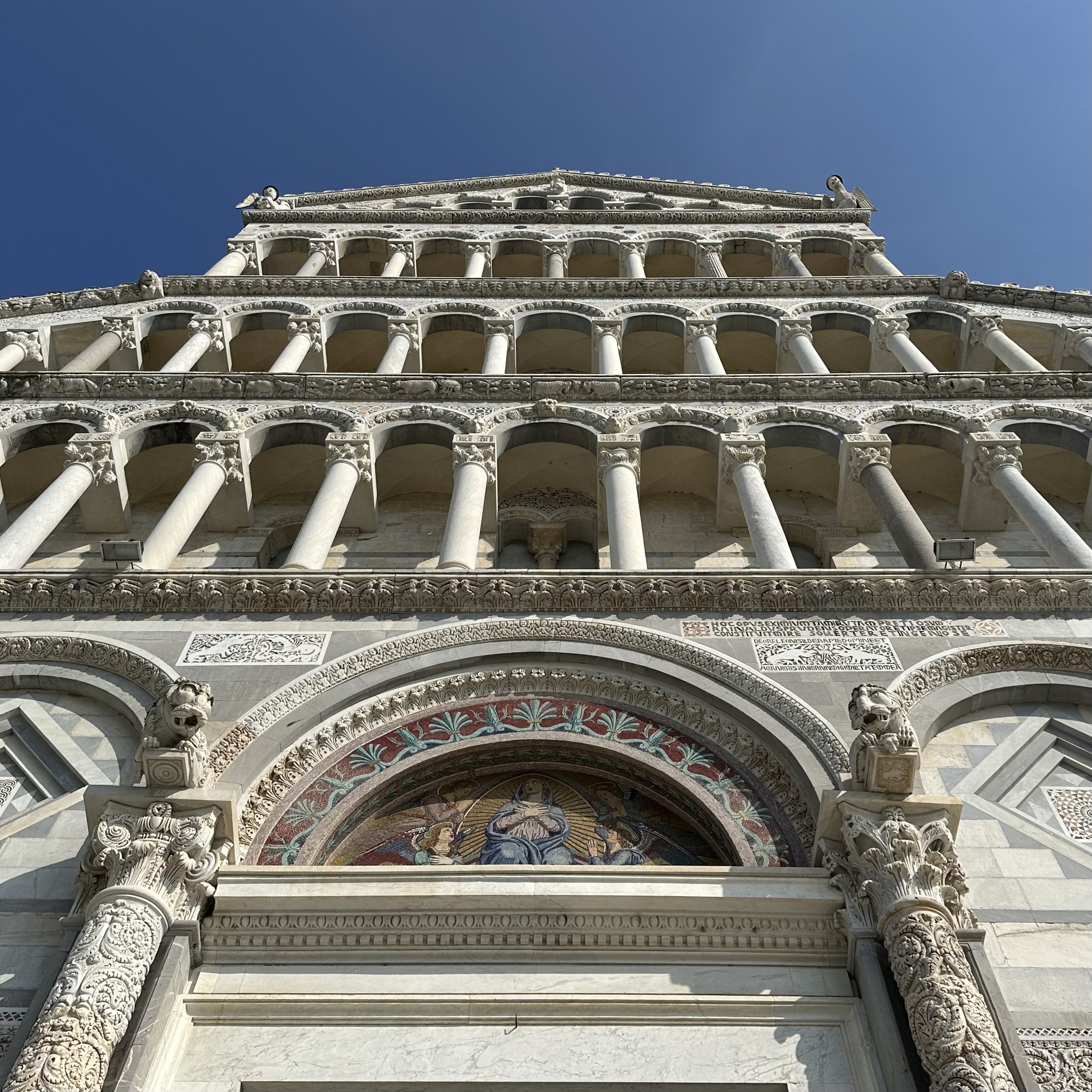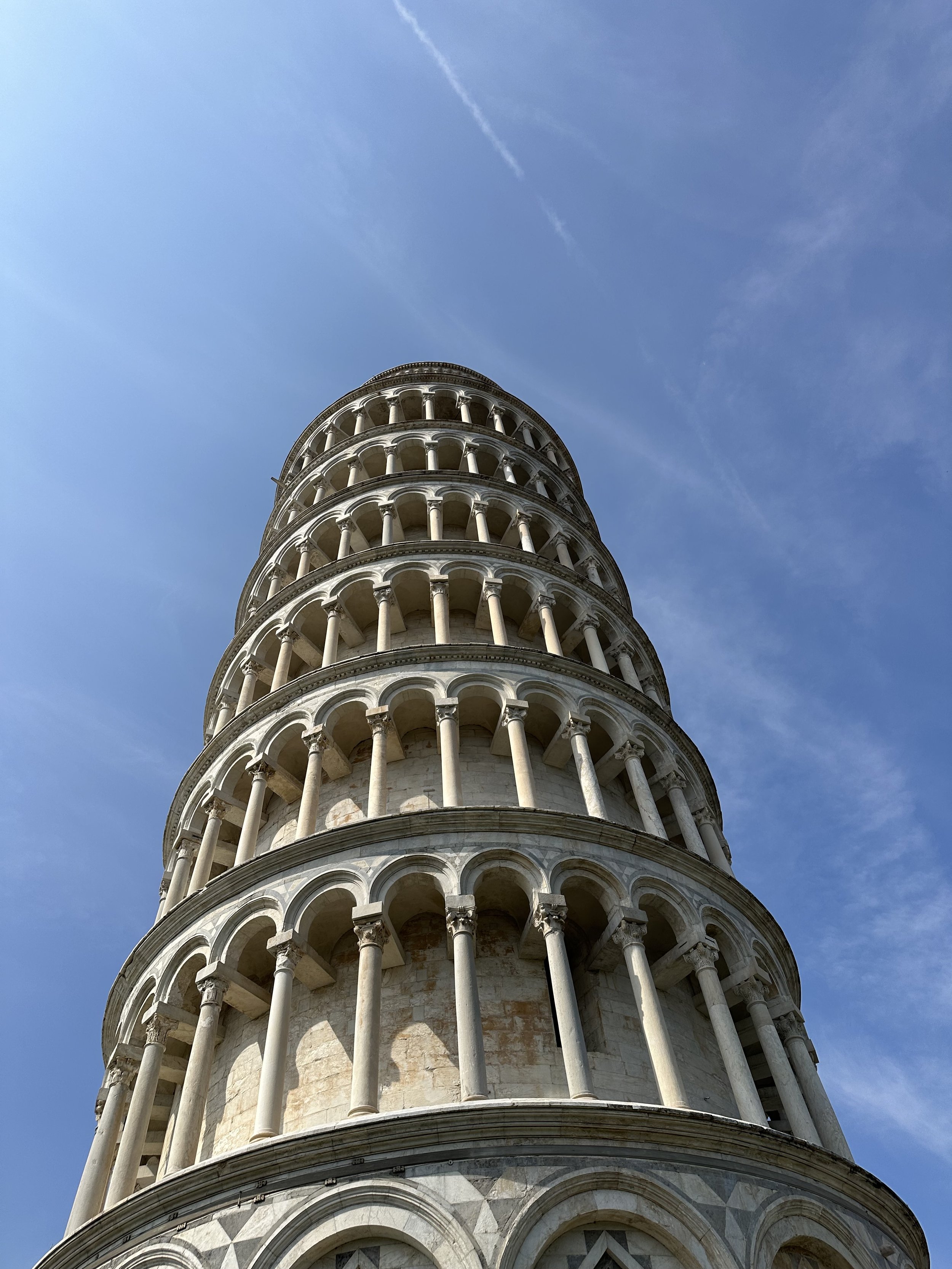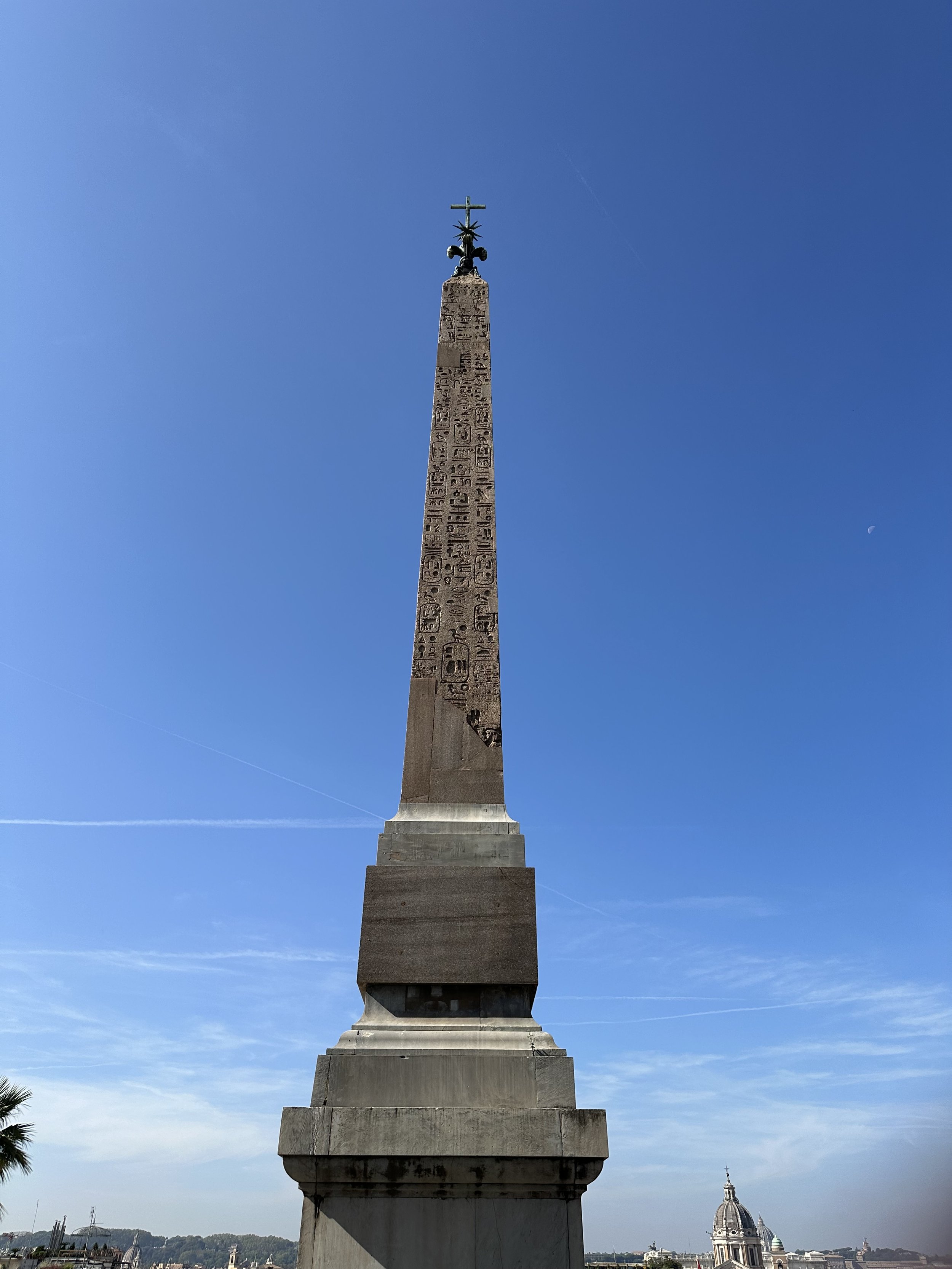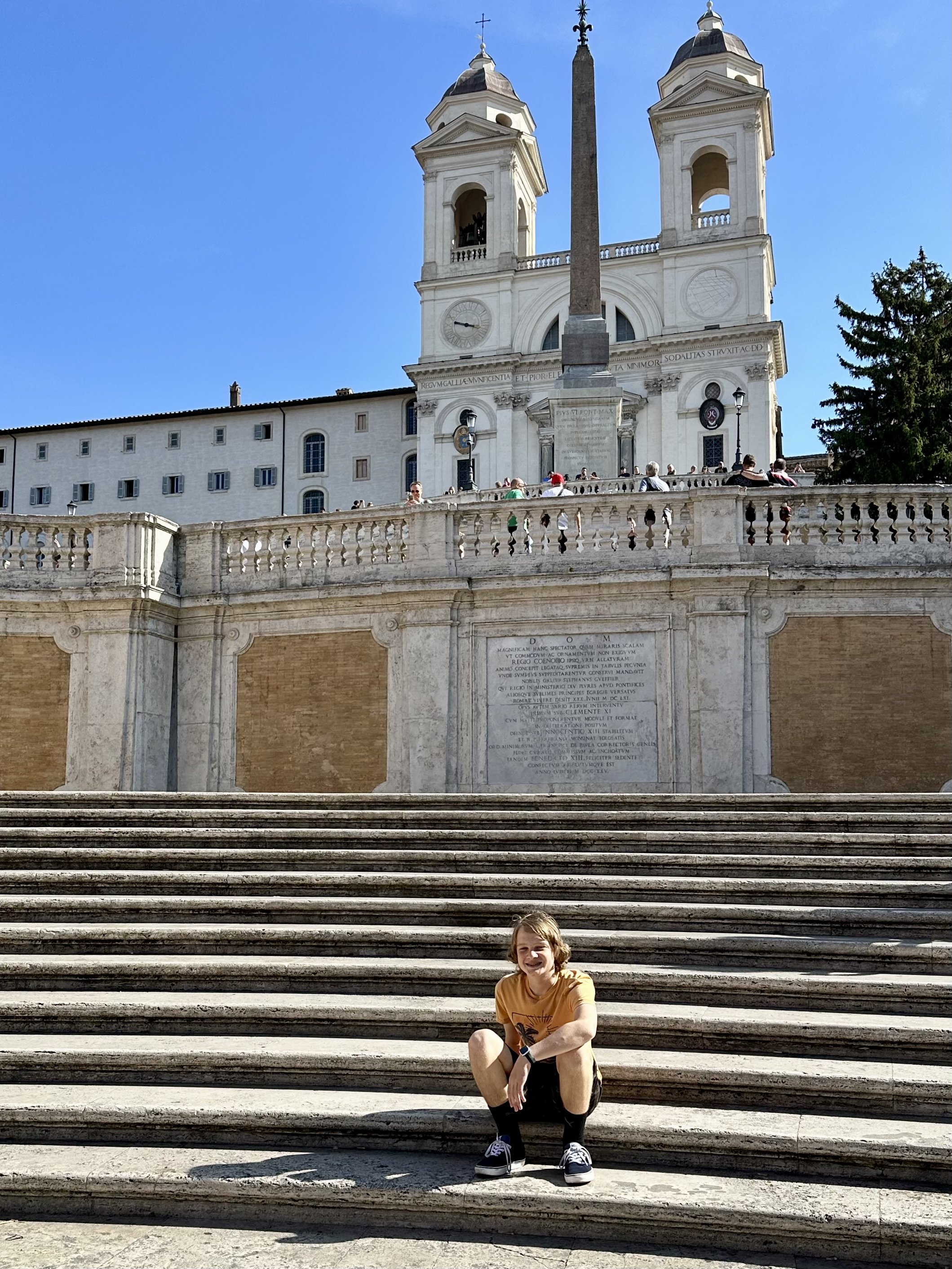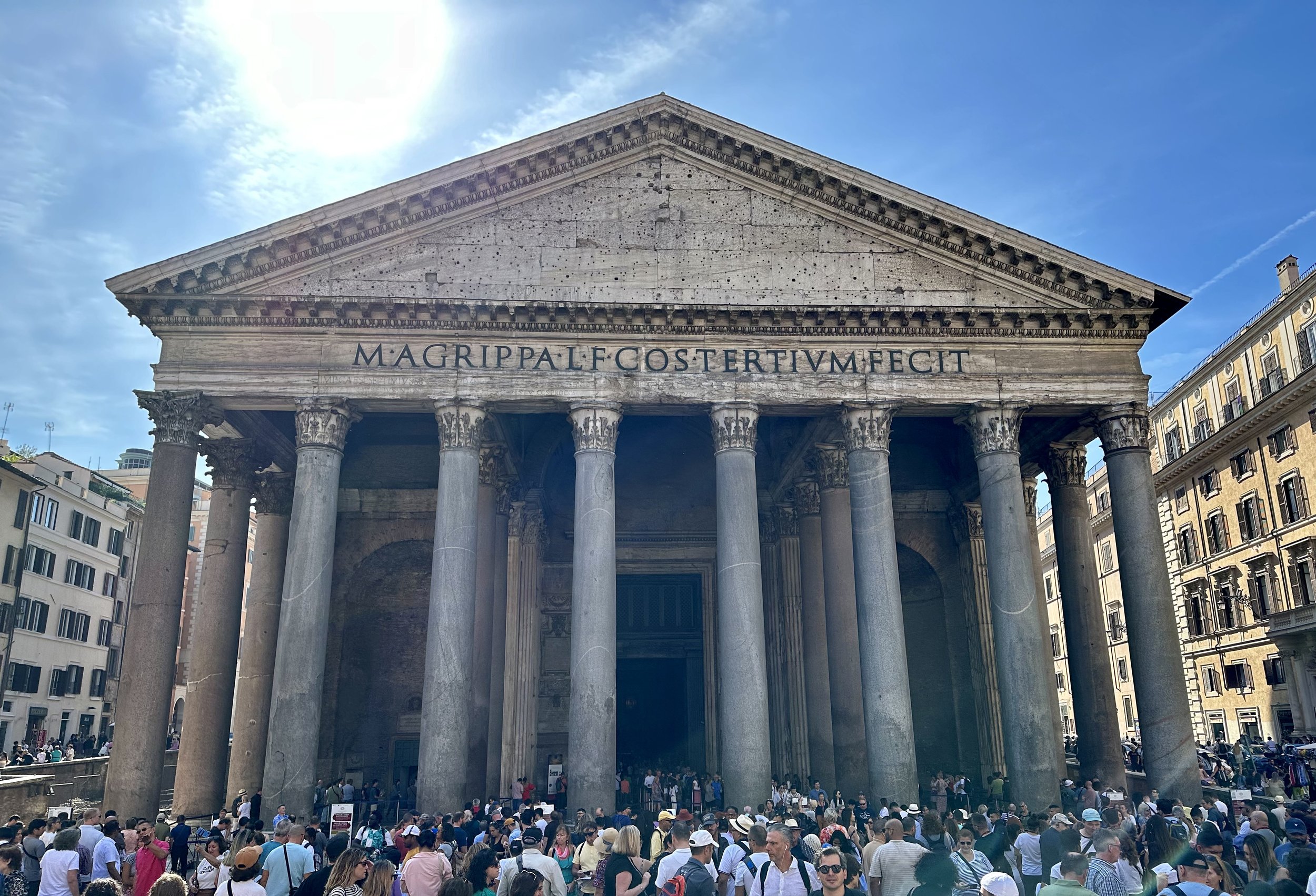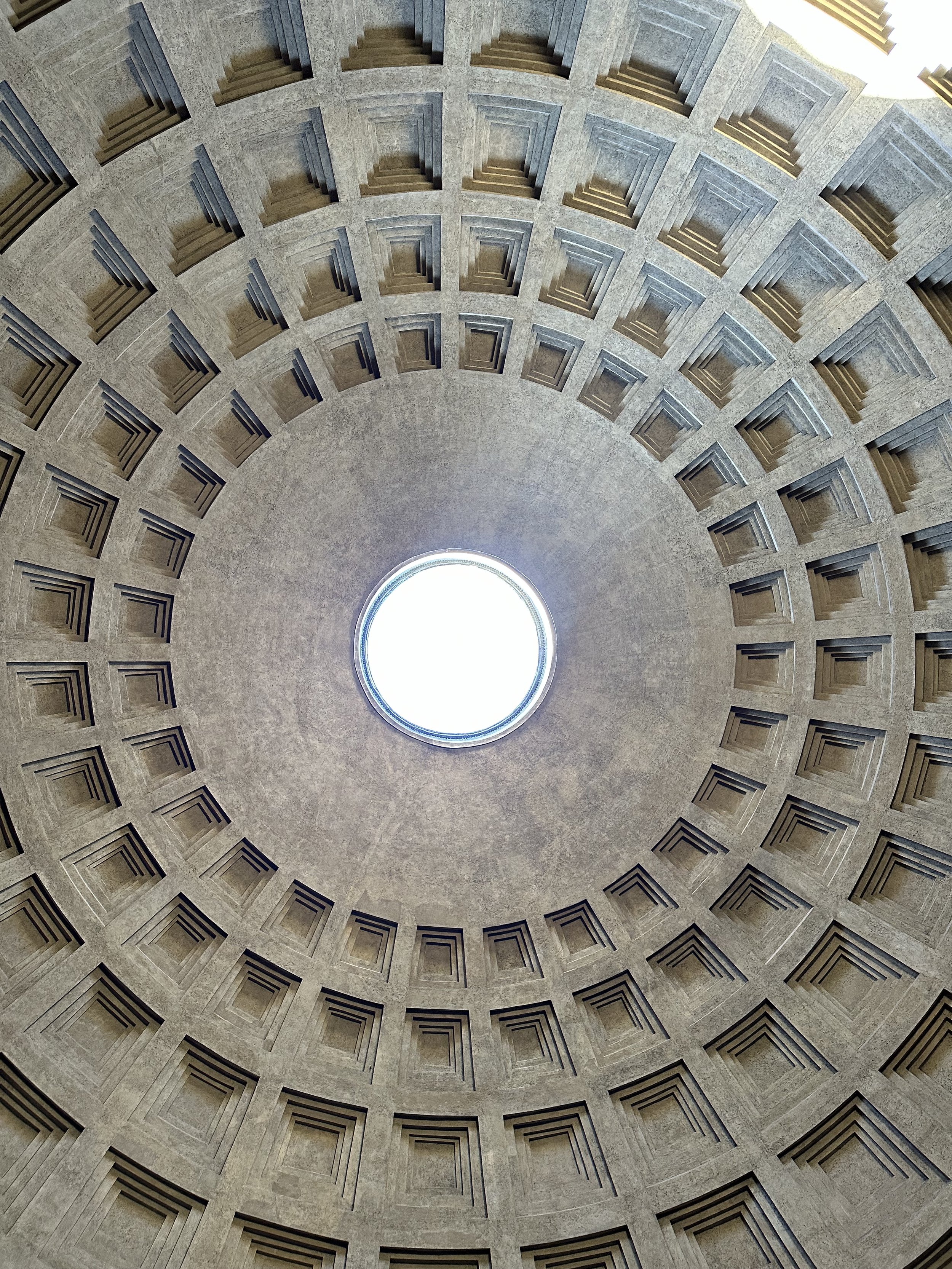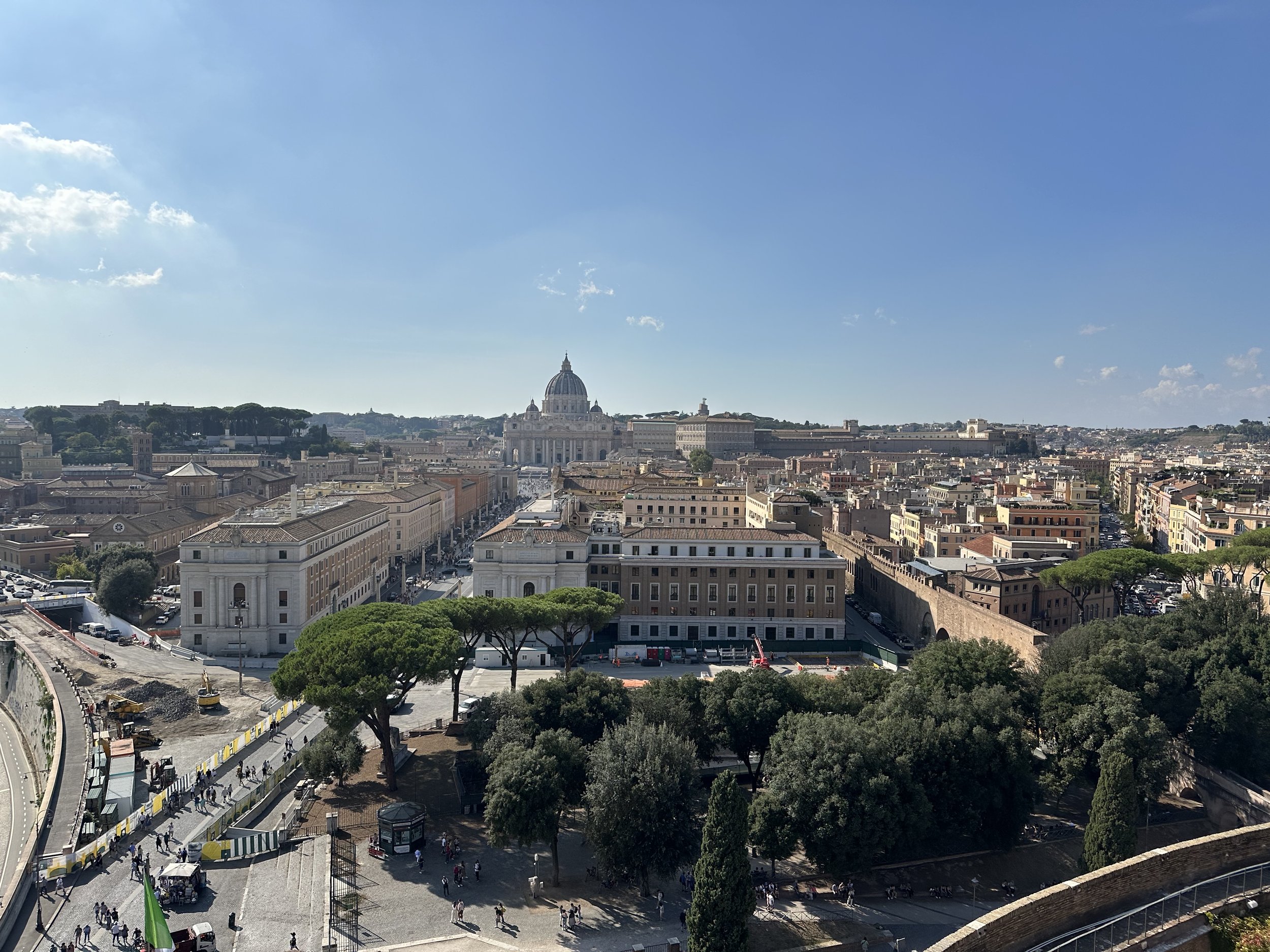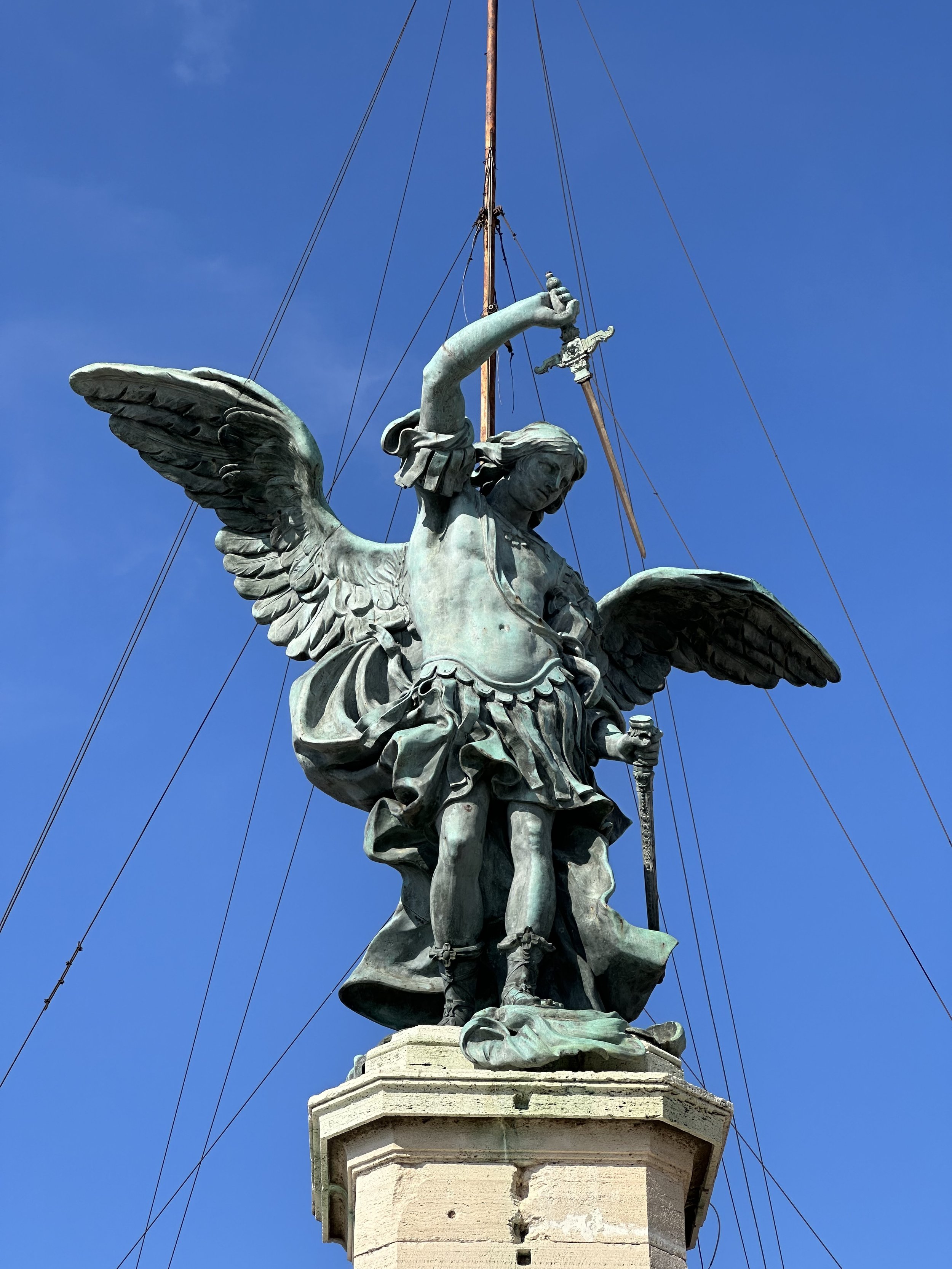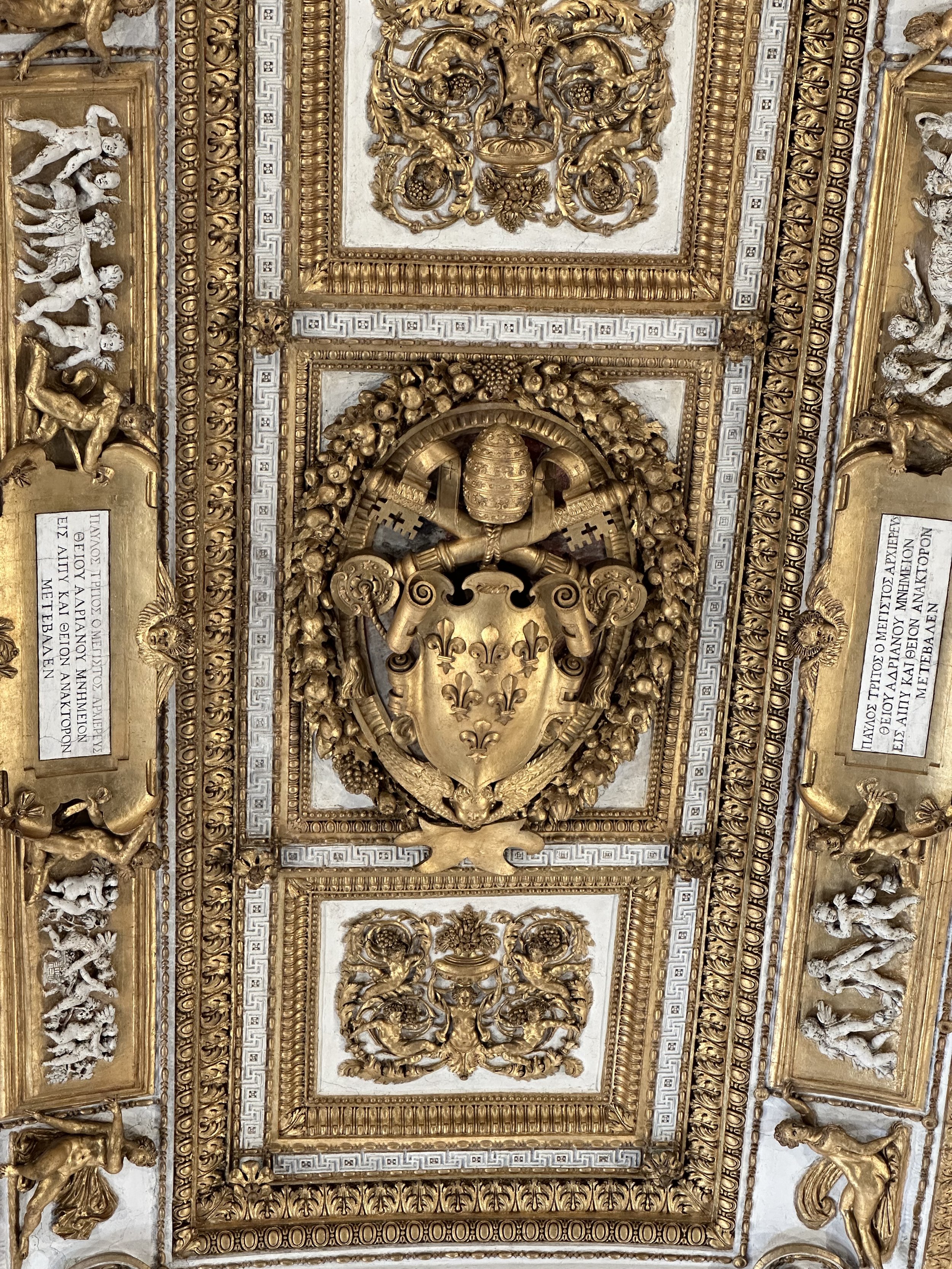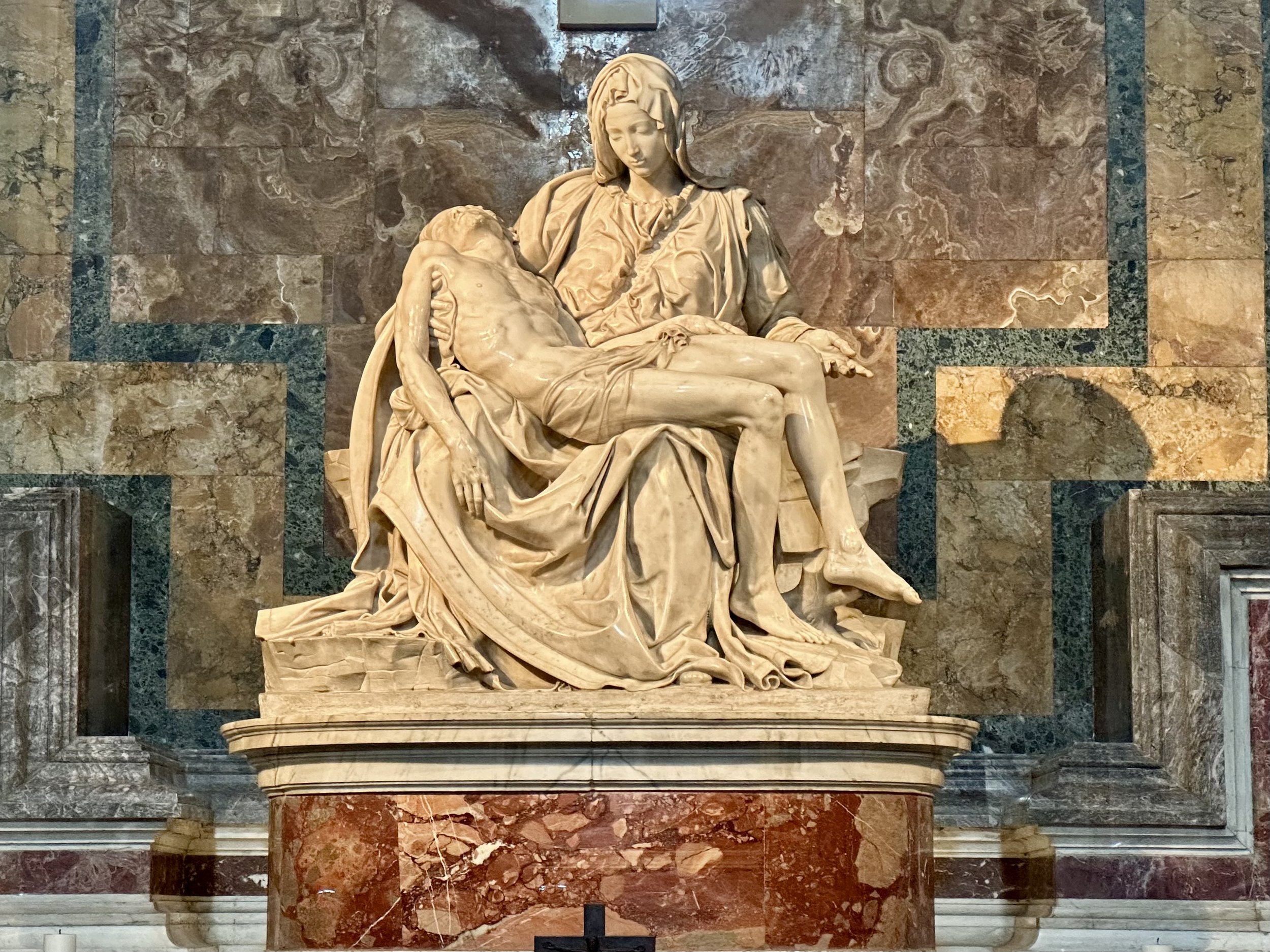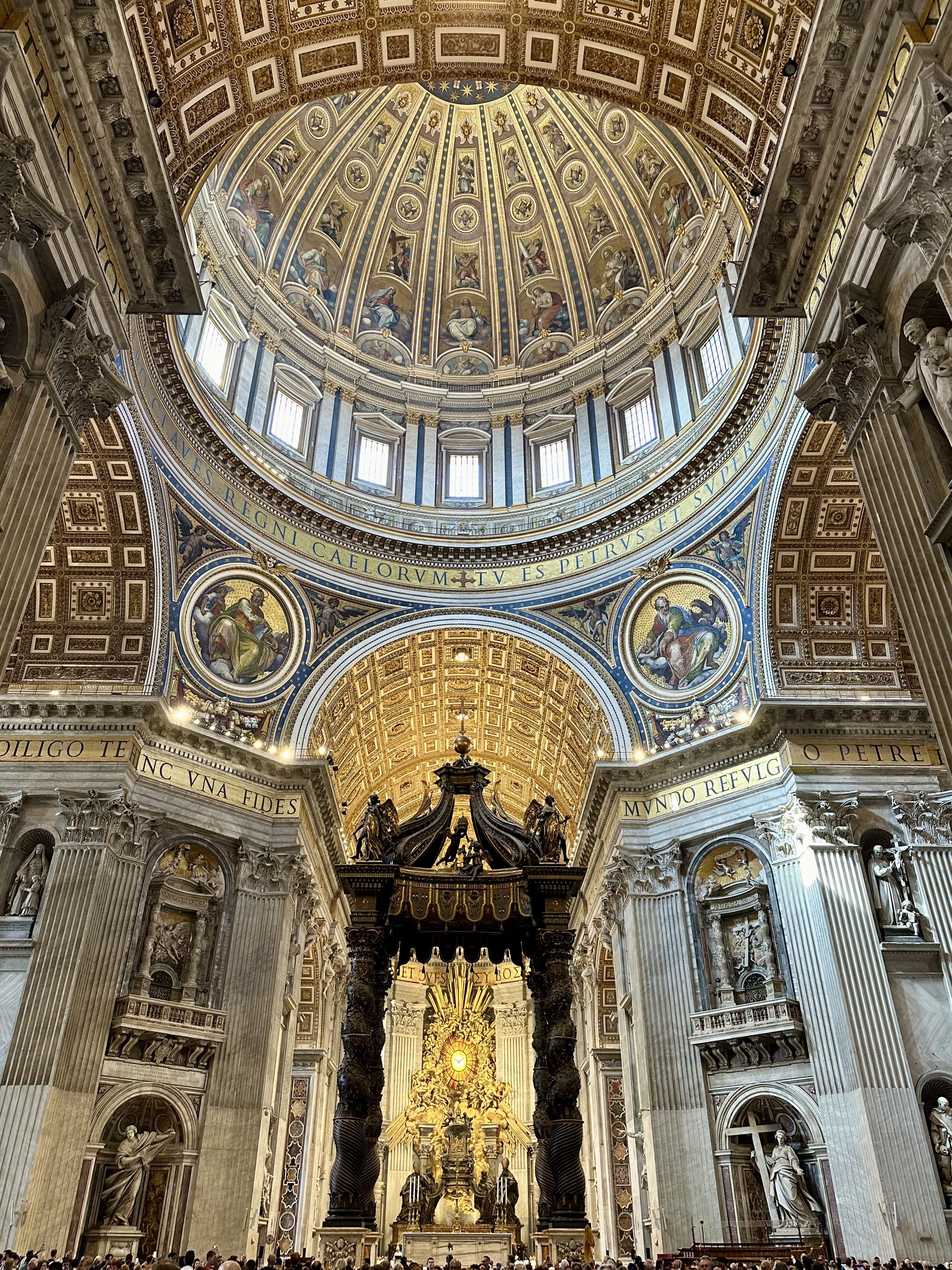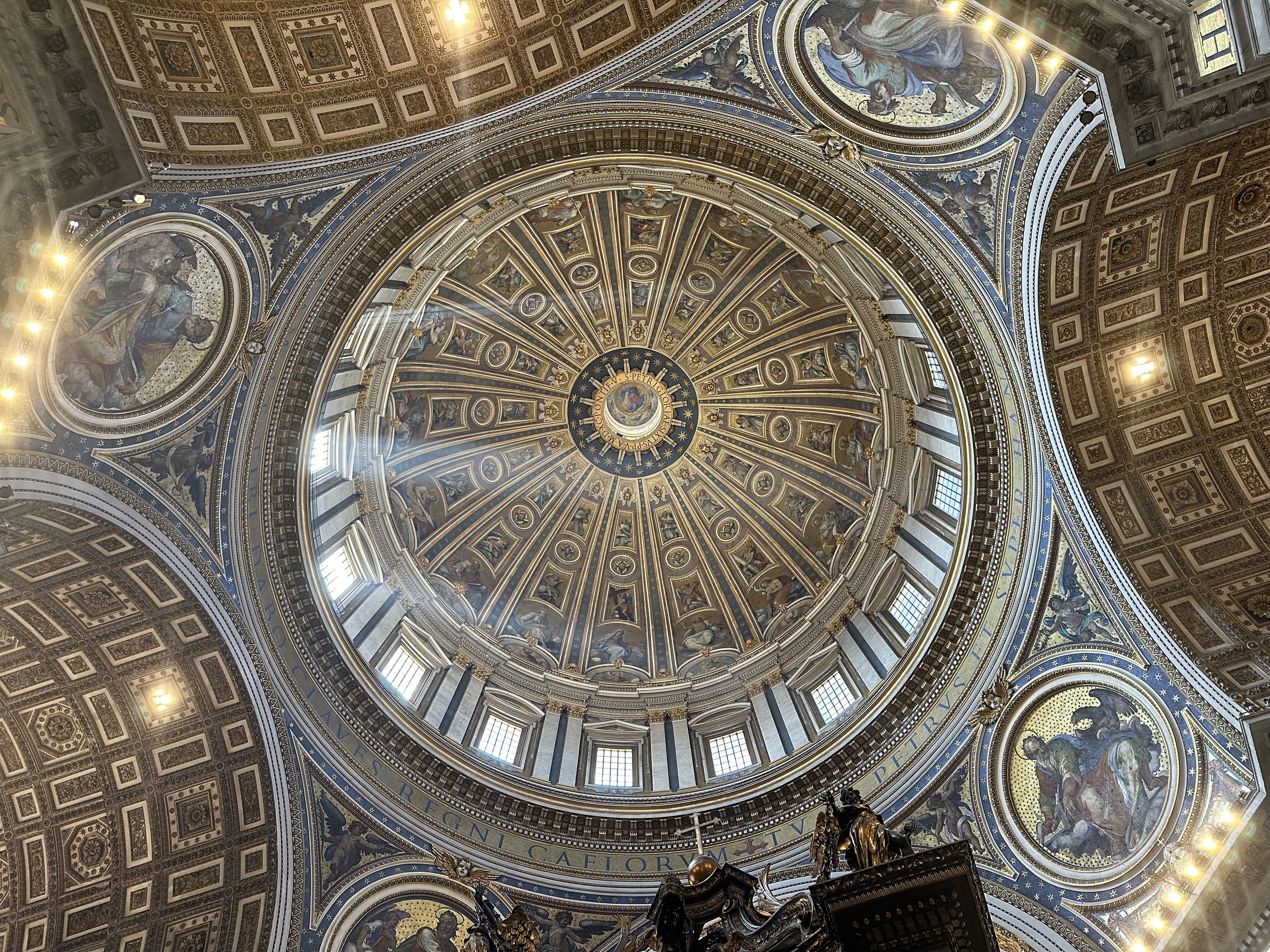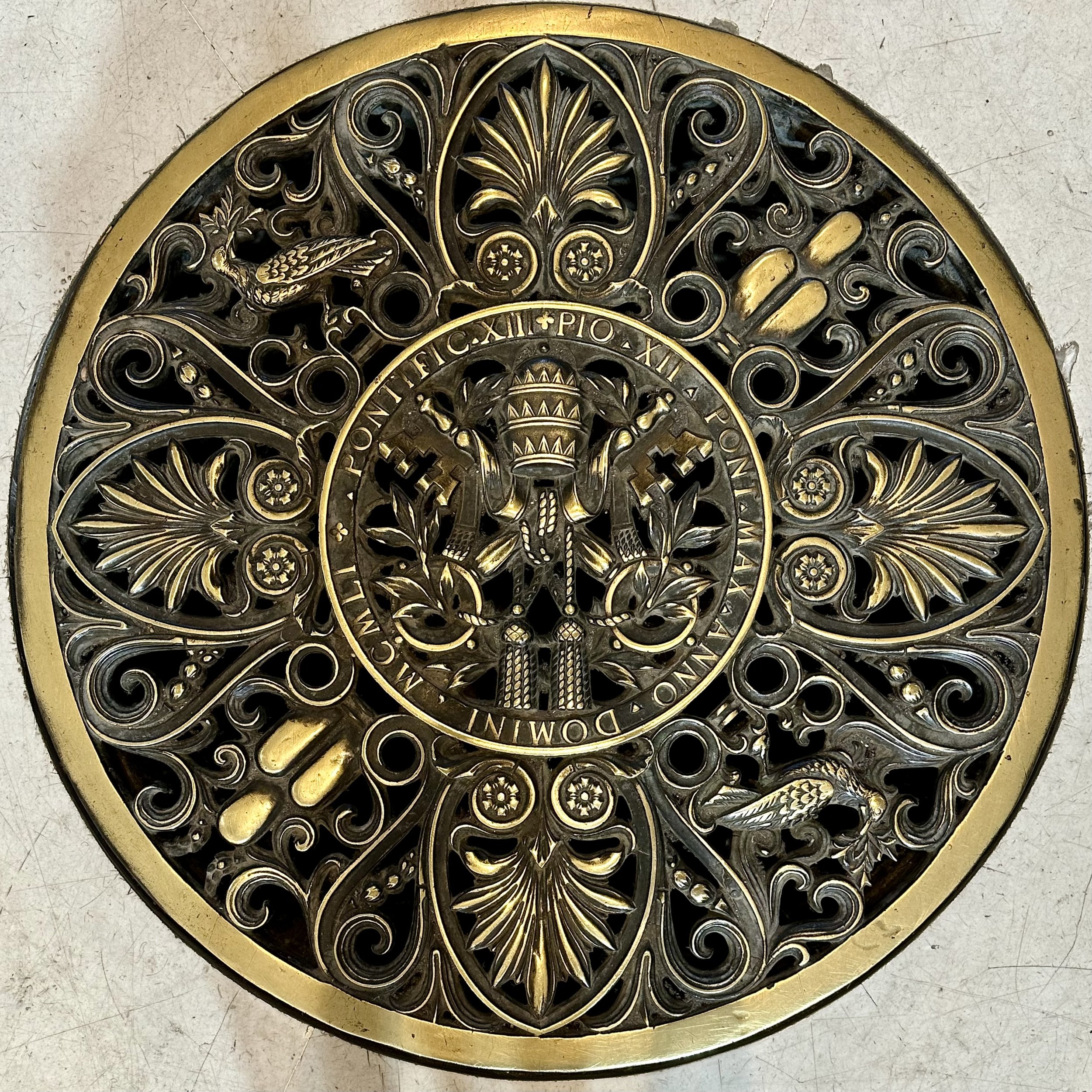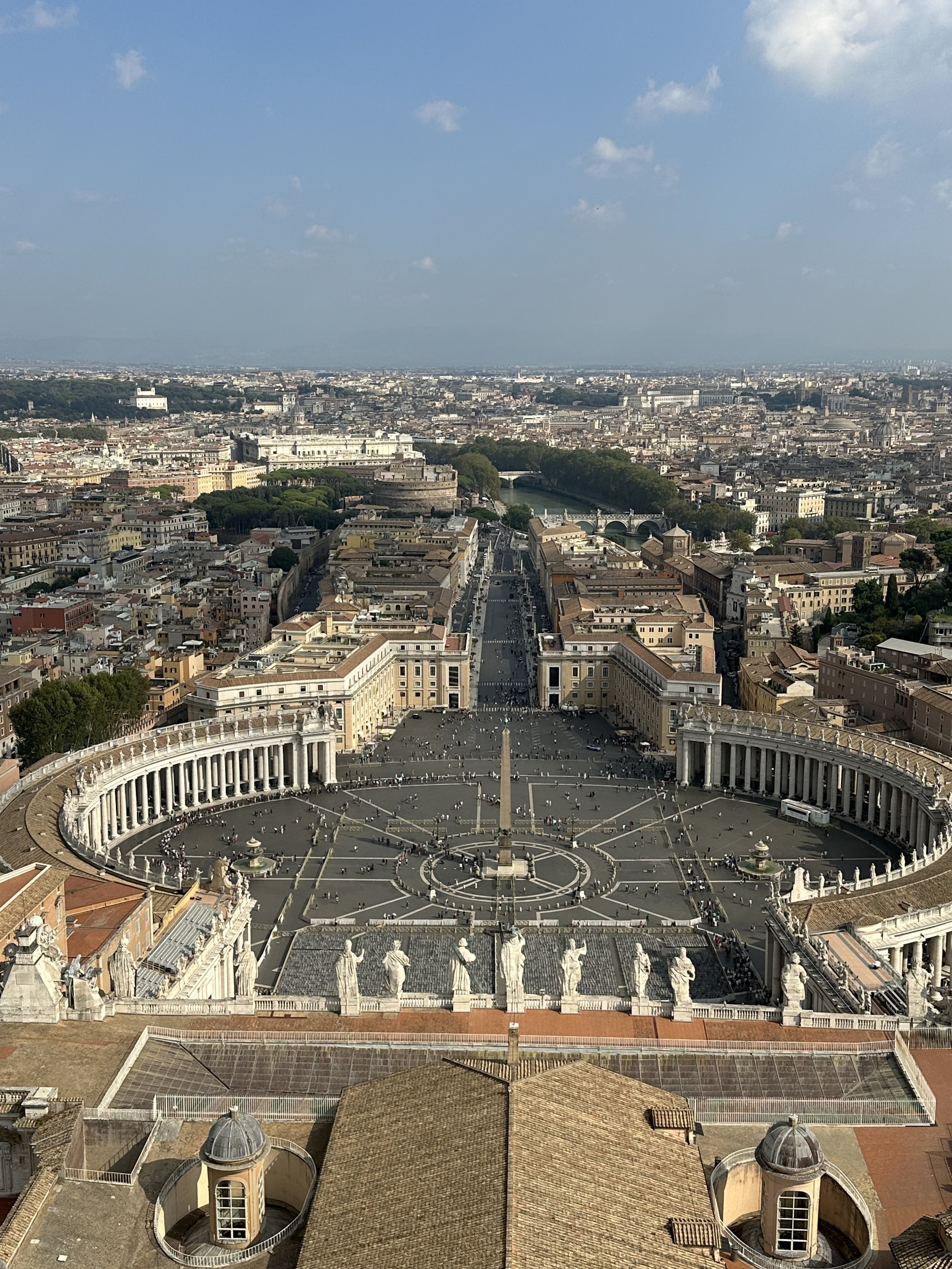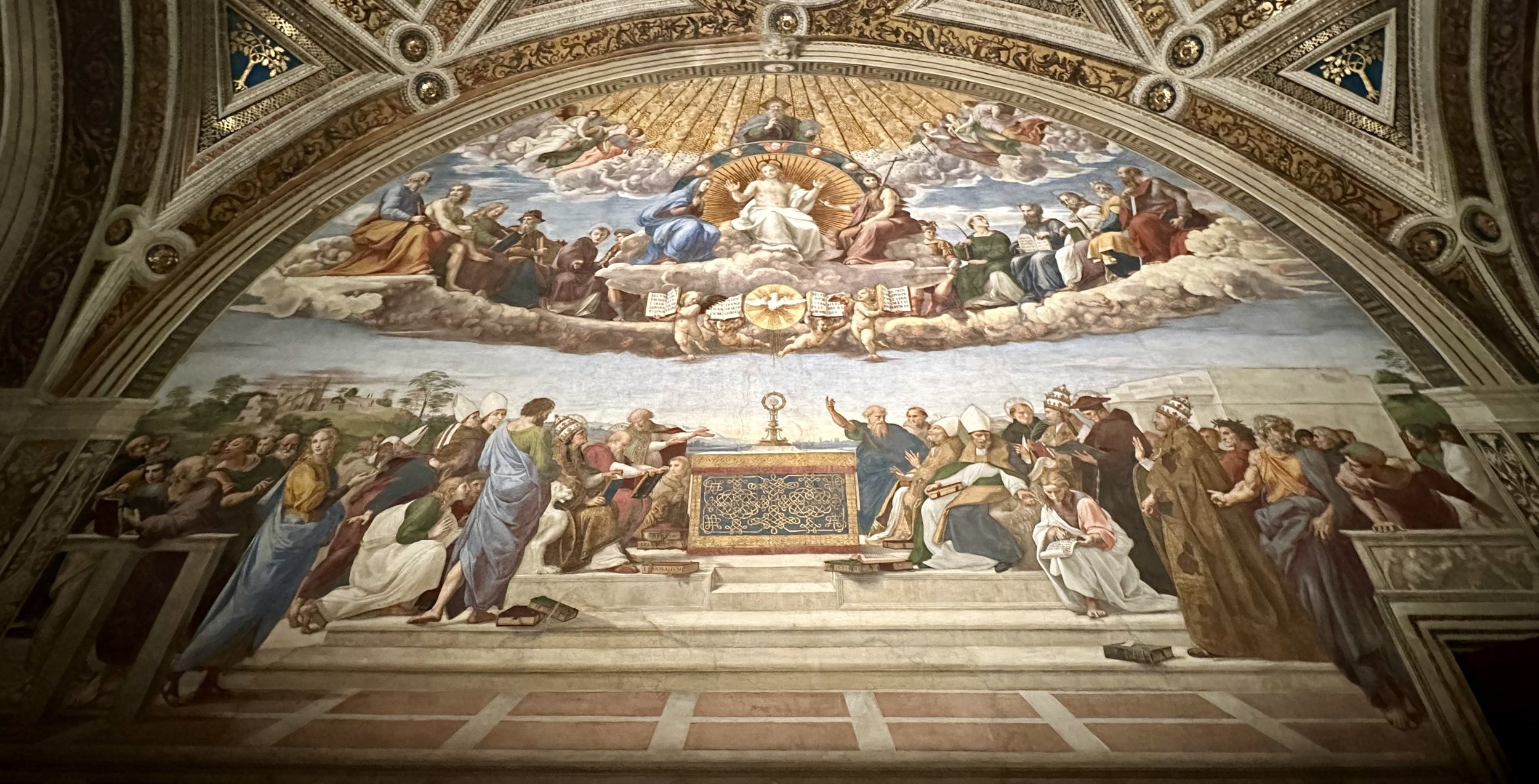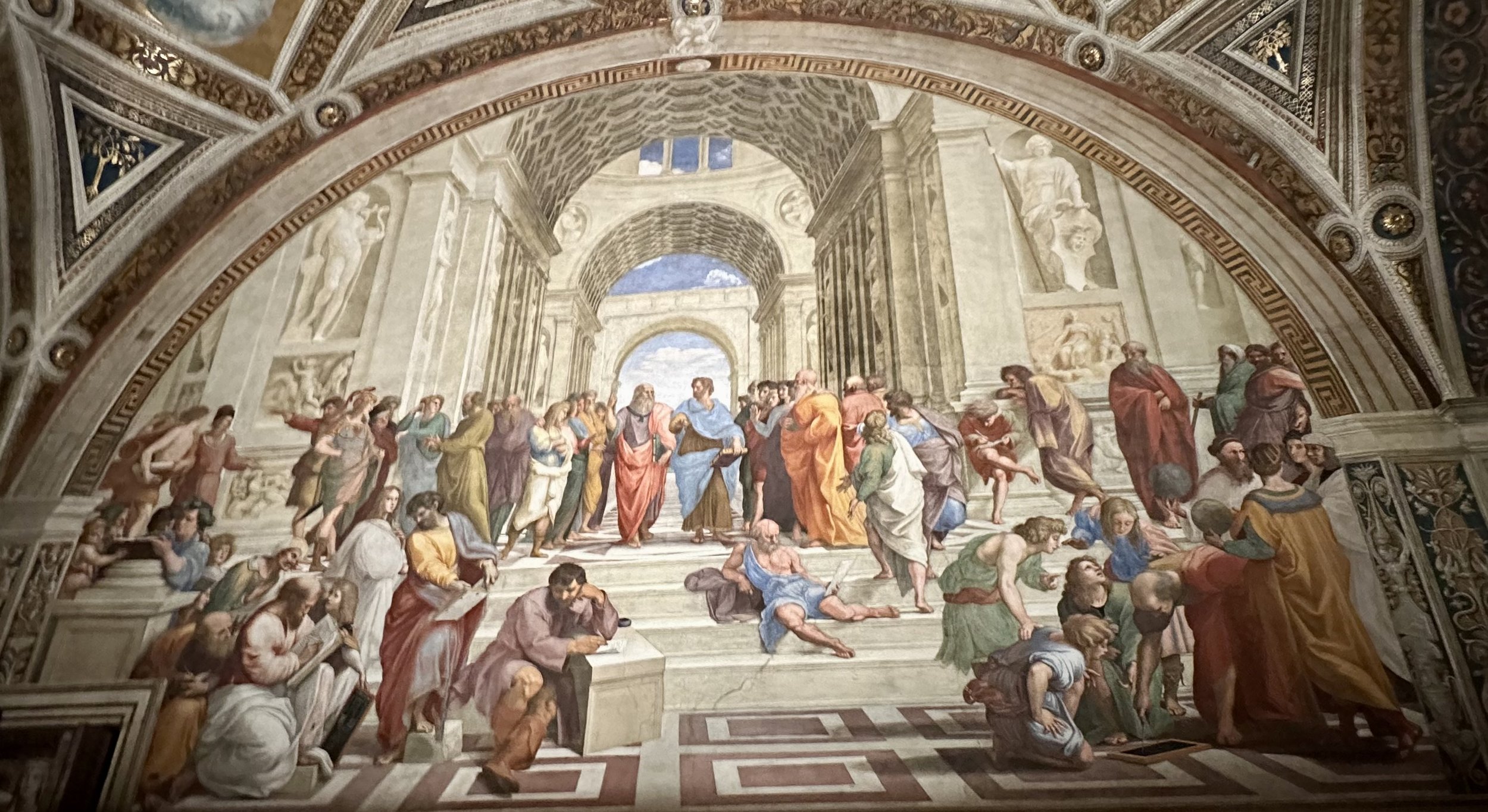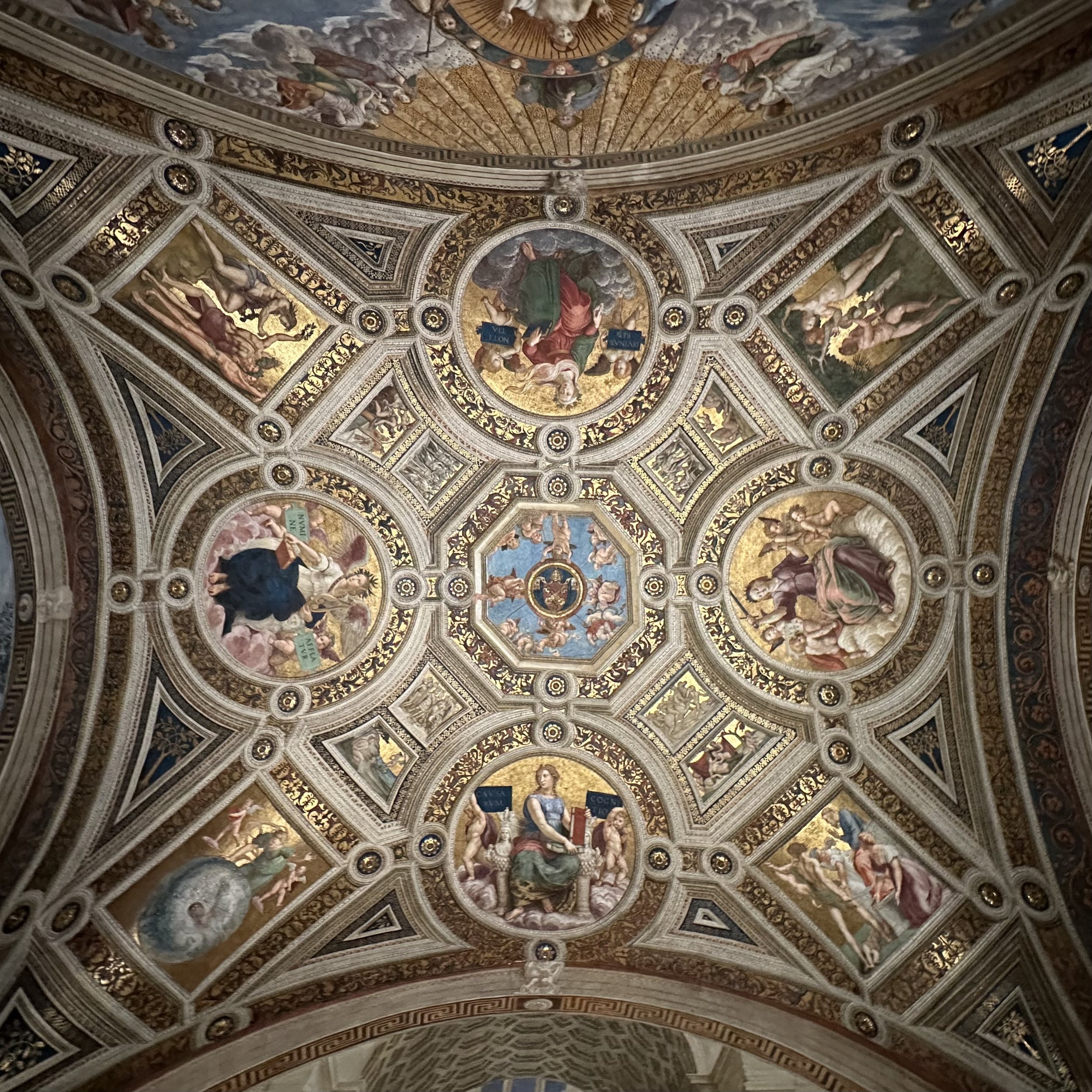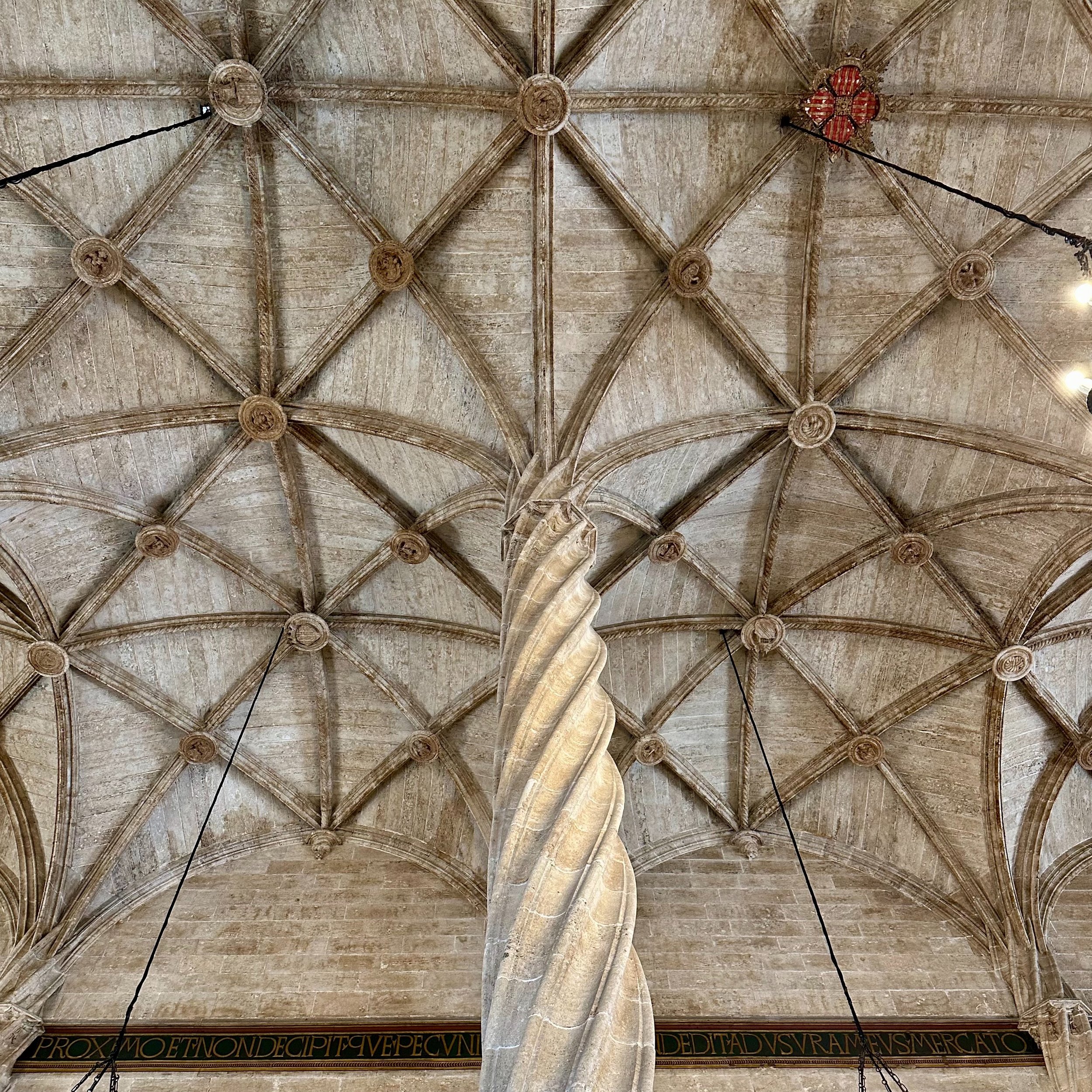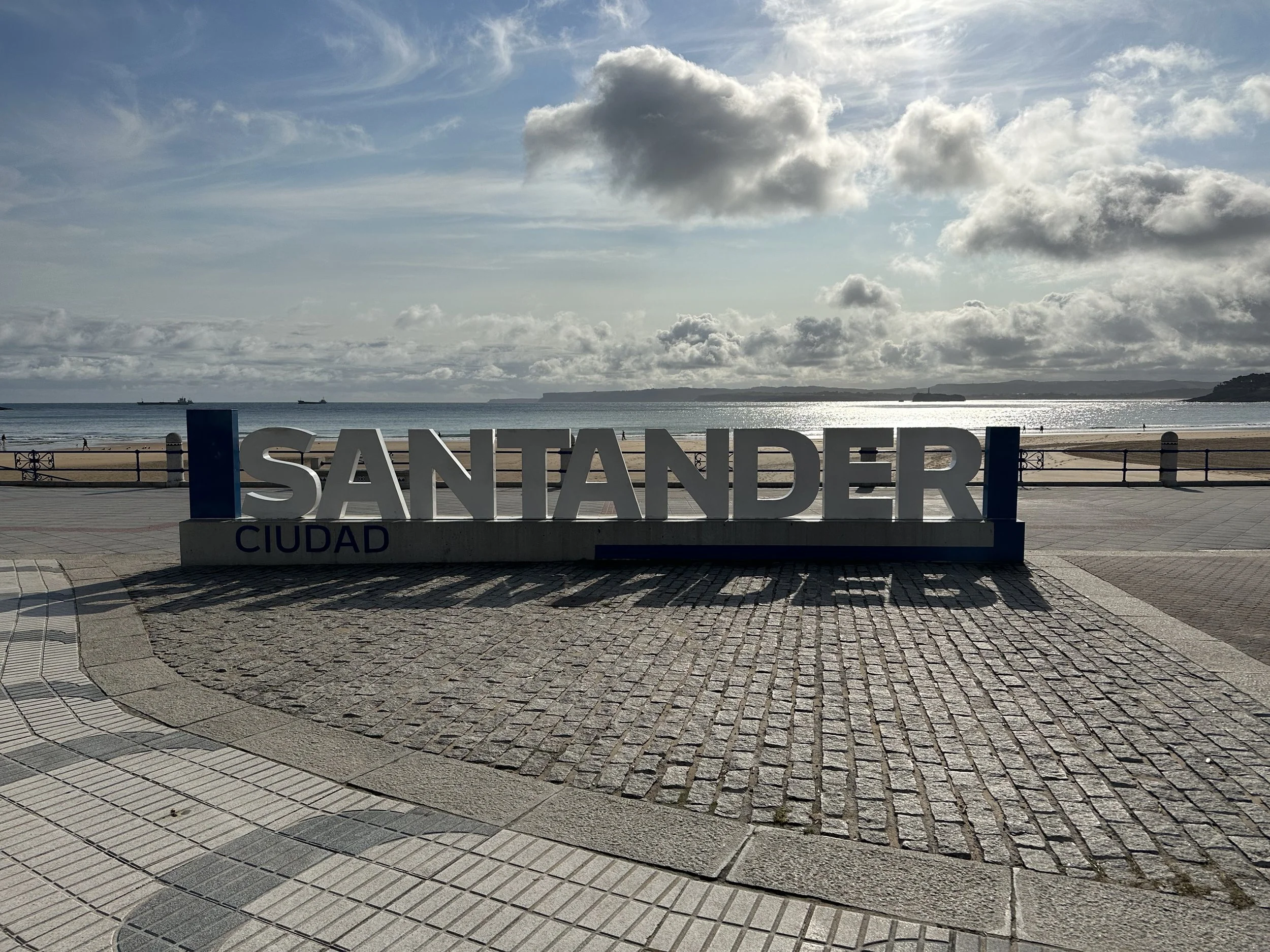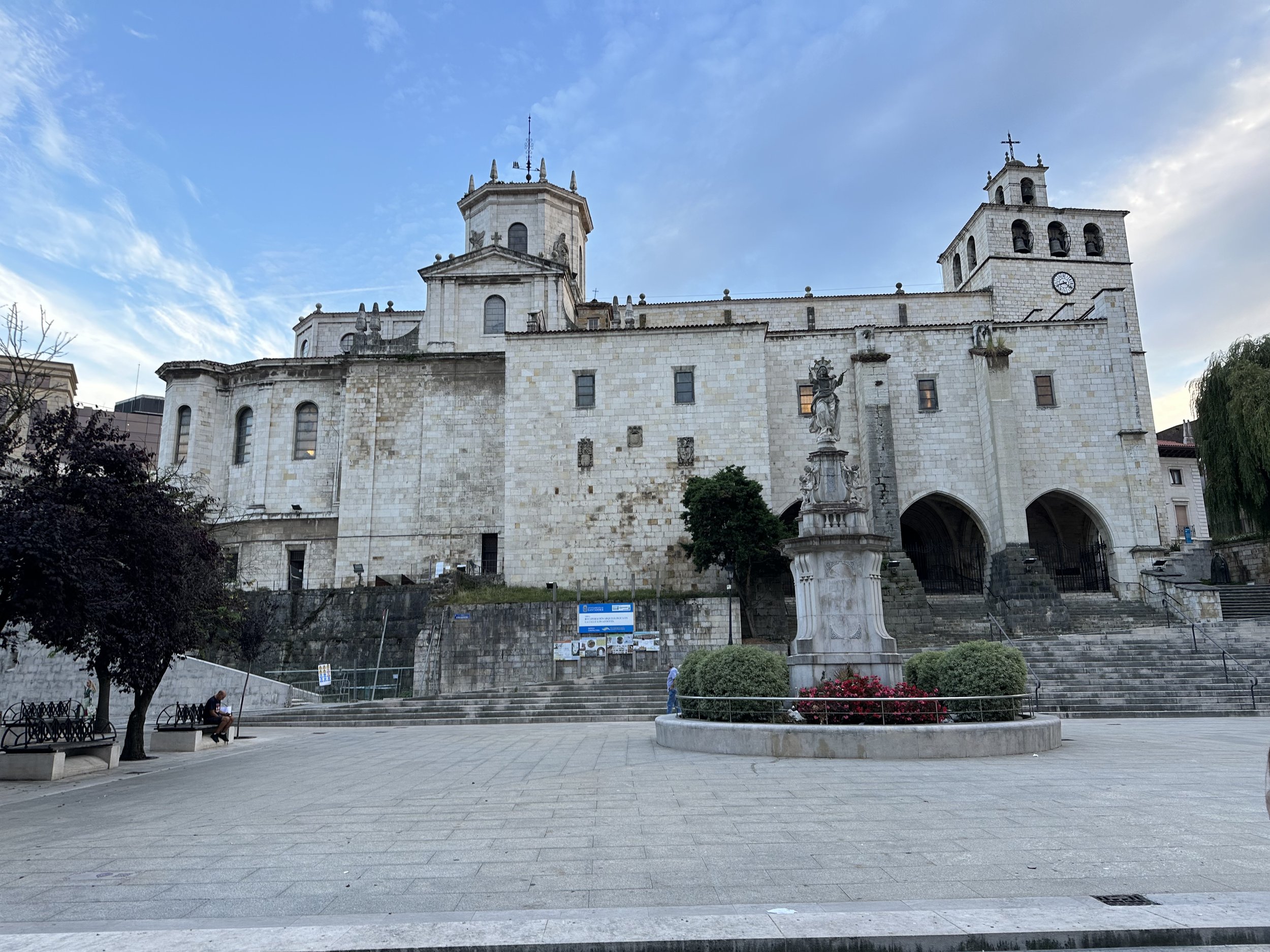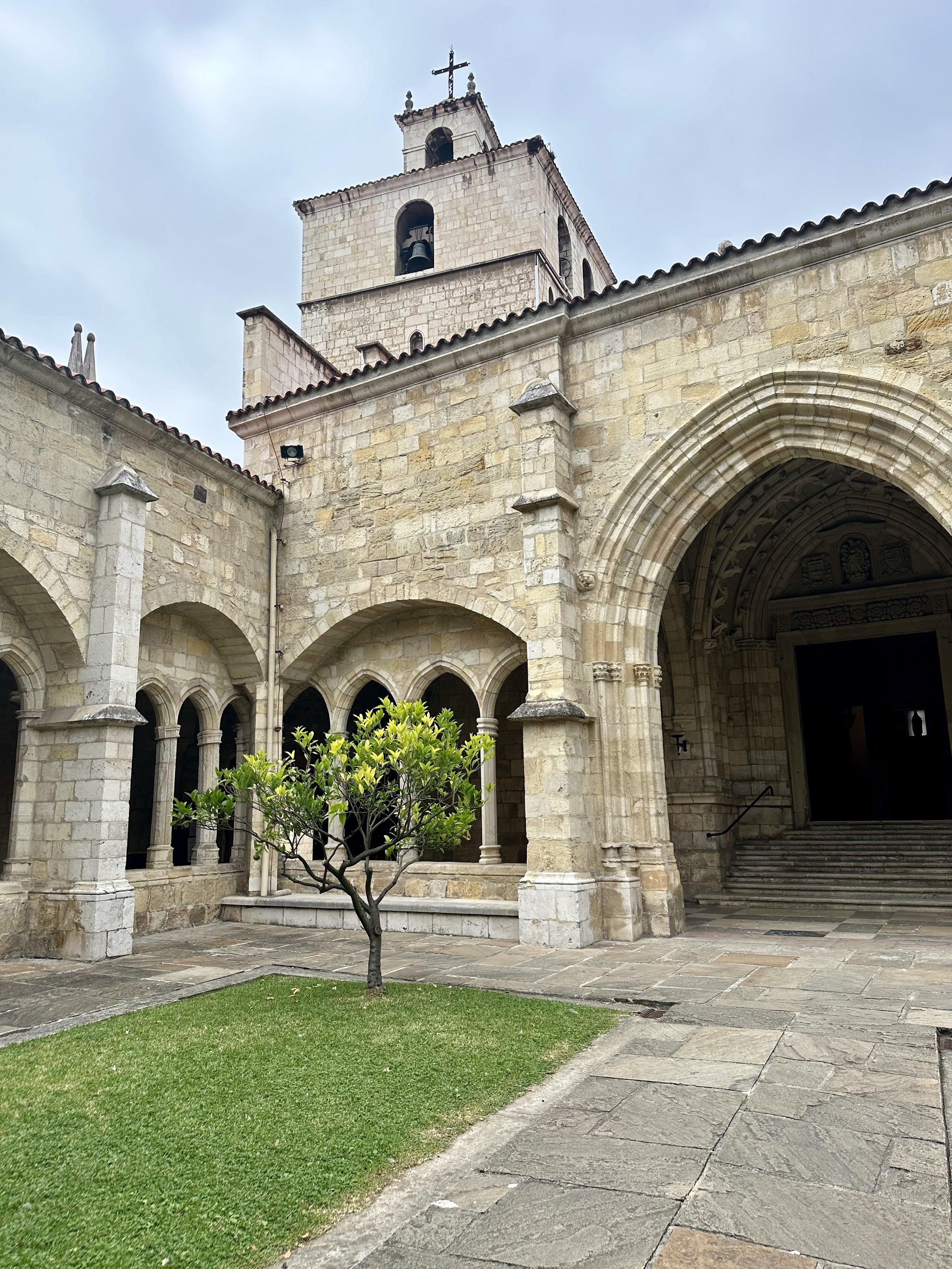We got back from Italy yesterday. It was nice to have another mini “vacation.”1 (I started writing this almost a month before publishing … sorry for the weird timeline.)
A Five-Hour-Delayed Flight
Things got off to a pretty rough start. We hurried to the Santander airport on Monday morning to find that our flight was delayed. In fact, it wasn’t just delayed, it had been re-routed to a nearby airport. So, they loaded all of us onto buses and drove us to an airport almost two hours away. When all was said and done, we made it to Rome safely, but we were almost five hours behind schedule!
Our initial plan was to drive from Rome to Pisa (and then to Florence) after we landed. But, since we were so far behind our schedule, we had to skip Pisa and drive straight for Florence.2
Driving in Italy
Driving in Italy was stressful. So many scooters to try to avoid! And, Italian drivers treat the lane markers on the road as suggestions, which can get pretty scary if you’re not used to it. Things got easier the longer I drove—though we also got farther outside the city the farther we went—but I still felt nervous every time I got behind the wheel. Luckily, we basically drove from Rome to Florence and then left the car parked until we left Florence; then, we drove to Pisa, parked for a few hours, and drove to Rome where we parked long-term again (only moving the car one time, for about two minutes).
Florence
I think I have heard my wife talk about wanting to visit Florence someday more than just about any other place. So, she was really excited to get out and see the city as soon as possible.3 But, since we arrived so late, all we could do was climb in bed and try to make plans for the following day.
Duomo
Florence’s central cathedral is likely its most famous landmark. It is certainly the thing I knew the most about before visiting the city. (Well, that and Michelangelo’s David, of course.) The cathedral’s massive dome dominates the skyline in nearly every photograph of the city. We were probably half a mile away when we spotted the dome. As we got closer, we could see just how big it is.
We were especially shocked to see:
How big the cathedral itself is, and
How colorful and ornate the cathedral is on the outside.
I have seen and been inside several European cathedrals, some of them on the more famous side of spectrum (Chartres, Köln, Notre Dame [de Paris … outside only], Strasbourg, and others) and most of these have a lot in common; Florence is very different from these (in a good way!). There is no “spire” and there is a noticeable lack of stained glass windows. These things tend to feature pretty prominently in French gothic cathedrals, but not in Italy, I have learned. The outside of the cathedral is made of a striking combination of white and green marble arranged in geometric patterns and stripes. Of course, the large dome is the most striking—and most famous—part of the cathedral; I knew it was big, but I didn’t know it was that big. You can actually climb up inside the dome (since the secret to its construction is that it is actually two domes), but the tickets sell out weeks in advance if not more, and we didn’t know to look into it ahead of time.
Art Museums (Uffizi and Accademia Galleries)
Florence was essentially the birthplace of the Renaissance, and as a result, the place is bursting at the seams with late-Medieval–early-Baroque art. We visited both of the city’s most famed art museums, the Uffizi Gallery and the Accademia Gallery.
We first visited the Uffizi Gallery, which was one of the first public art galleries in the world. The crowd inside was close to unbearable at times, but we did find some respite here and there. The museum is organized in a more or less chronological fashion, which is nice; some of the first things you see are works by Giotto and the last things are by Caravaggio.4 I wish I had been paying attention a bit more to the organization, and therefore the subtle changes in style over the length of the visit. Instead, I was annoyed by the size of the crowd and the number of “professional” tour guides with large groups in tow that kind of ruin the whole experience for everyone.
We visited the Accademia Gallery on the following day. The crowd outside was terrible, but once we were inside it wasn’t as bad as we were expecting. Unfortunately, getting tickets to this museum more or less requires that you buy them from a third party; the tickets go on sale thirty days ahead of time and sell out within seconds, only then to pop up on sometimes-shady-looking third-party websites with a markup. So, we (like everyone else, I assume) had to get tickets this way, which only makes the crowd outside worse. An awesome surprise for us was the museum’s musical instrument collection! It was in a small wing just after the entrance, but I am glad we made that detour!
The Accademia Gallery’s most prized and famous work is Michelangelo’s “David.” One thing that is really cool about how they have it displayed (it’s huge, buy the way) is the series of in-progress sculptures by Michelangelo. For me, this was a great “education” on how the process of sculpting in marble world in practice and how Michelangelo himself worked. You can see the markings of his sculpting tools and his “order of operations,” so to speak. I am far from an expert in sculpting, but I found these in-progress works fascinating.
Like I said, “David” is bigger than most people probably assume. It is certainly bigger than I had assumed (save the fact that there is a replica in the courtyard in central Florence, which I had already seen). Apparently, the initial plan was for the sculpture to sit high up in the air near the cathedral; we were never meant to see it from the up-close angles that we do. This is why David’s hands, feet, and head are a little out of proportion (too big) were actually an effort of Michelangelo’s part to play with perspective a bit; from that distance these features would look correctly proportioned This was a revelation to me!
Pisa
After a few days in Florence, we drove to Pisa on our way to Rome. We had originally planned on visiting Pisa before Florence, but our several-hour delay in getting out of Spain made it so we had to rearrange our plans.
Of course, the most famous thing in Pisa is its so called “leaning tower.” It’s a little tricky to capture the “lean” in photographs due to the the problem of single-point perspective when you turn your camera lens upward. I think I got a pretty good one, here, though.
Perhaps more so than the tower, I thought Pisa’s cathedral was pretty impressive. It’s technically “gothic,” like Florence, but doesn’t resemble the “gothic” that I learned about in my French classes in college (again, like Florence). The outside of the cathedral is less striking than Florence, though this is not to say that it isn’t interesting looking or beautiful in its own right. Inside the cathedral, the nave is lined with striped marble archways which are almost reminiscent of a mosque. Behind the altar is a huge dome with a gorgeous paining and gold-leaf piece that is among the most beautiful I have seen.
Rome
Rome probably deserves its own post. Rome probably deserves its own book.5 But, I don’t have that kind of time, despite the fact that I am on sabbatical. (I am already publishing this a full week later than I had hoped.)
We then drove from our short stay in Pisa to Rome. We arrived late at night, so we didn’t see any of the city until the following morning. We had tickets/plans for our second and third days in Rome, but for this first day we just kind of wandered around, looking for all of the more famous sites, etc.
Trevi Fountain, Spanish Steps, Pantheon
We first stopped by the Trevi Fountain. I thought this was far too crowded and kind of underwhelming. But, “when in Rome,” as they say.
We climbed the Spanish Steps, which I was expecting to be a much bigger ordeal than it ended up being. The view from the top is quite nice. For some reason, though, I had it in my head that this was a really grueling climb and that reaching the top was not for the faint of heart; it wasn’t that big of a deal (which probably says more about my background knowledge of Rome’s more famous sites than it does about the Spanish Steps themselves.)
Next, we found our way to the Pantheon. One thing I learned is that the top of the dome of the Pantheon is actually open, like a skylight. This lets quite a lot of natural light into the building and brigs back memories of when the place was a pagan temple of sorts … probably something having to do with a “sun god” or something. I have no idea if the hole in the top is part of the original design or not, but this what came to mind for me.
Castel Sant’Angelo
I think the highlight of the day was Castel Sant’Angelo. The building itself was originally a mausoleum for emperor Hadrian which was then converted into various different things over time. It was interesting to see the various “layers” of history through the building. The best part, though, is the view from the top! The building stands directly in front of Vatican City and you can see most of Rome from the top. It was worth the cost of admission and extra time to get to see the view!
The Vatican
On our final day in Italy we spent the day in Vatican City. We had no idea how long it would take to get into St. Peter’s Basilica, so we got a fairly early start, wanting to make sure we had enough time before our appointment at the Vatican Museums. Despite the length of the line to enter the basilica, the wait actually wasn’t too bad; the line moved pretty quickly and we were inside well within an hour.
St. Peter’s Basilica
Of course, the most prominent landmark in Vatican City is St. Peter’s Basilica and St. Peter’s Square, and it’s easy to see why given the size and proportionality of the place!
I didn’t realize that Michelangelo’s “Pieta” was right inside the entrance, but right after we walked inside, there it was off to the side!
The entire building is a masterclass in impressiveness. There is something interesting and/or beautiful around just about every corner. And, despite the size of the crowd, we were able to get pretty close to most of the things we wanted to see.
After we had wandered through the basilica for quite a while, we decided to see what it would take to climb up the dome. We decided the cost (both financial and physical) was worth it, so my wife and I climbed all 500+ steps to the top of the dome and were able to get some incredible views!
The Vatican Museums
Our tickets for the Vatican Museums were for later in the evening so we found some food near the entrance to Vatican City and did some souvenir shopping while we waited for our tickets to be valid. We mailed a postcard from the Vatican’s main post office, which was kind of fun.
The Vatican Museums is a a huge complex of buildings that includes a labyrinth of exhibits and the Sistine Chapel. We wanted to make sure we had enough time in the Sistine Chapel so we made our way there first, not realizing that the museum is set up in such a way that you must walk through the entire museum in order to get to the Sistine Chapel … thus, we rushed through the whole museum in order to get to the Sistine Chapel. Then, after we saw the chapel, we wanted to go back and see the “rest” of the museum, so we basically re-traced our steps and went through the museum a second time, but we stopped to look at things this time around.
You aren’t allowed to take photographs inside the Sistine Chapel, so I have no photographic evidence that I was there. The chapel was both bigger and smaller than I had imagined. It was bigger in that the ceiling was higher than I thought but the actual area of the chapel itself was smaller. The ceiling is amazing, of course! One of the first in-depth non-fiction books I remember reading as a young adult was Ross King’s Michelangelo And The Pope’s Ceiling; I had forgotten many of the more intricate details, but seeing the ceiling in person jogged my memory for many of them.
Sign Off
There is so much more I could say about our trip to Italy. There are countless details I am forgetting and/or simply don’t have the times or space to write about. Too often I fall into the trap of wanting stuff to be “right” before I move on to the next thing, no matter how overdue the current yet-to-be-right thing is. I don’t want to get bogged down in that, here. It has already been almost a month since this trip and I have several other things I want to write about but haven’t (partly because I have been waiting to finish this post). So, I am going to simply leave this post here and move on to the next thing. (Although, who knows how long it’ll be before anyone sees any evidence that I have moved on.)
I say “vacation” because everything about the last two months and the next two months probably qualifies as a “vacation.” ↩︎
I know I said I liked to use local names/spellings for things in my recent post about València, but to do that here feels really pretentious. So, I won’t be saying “Italia” or “Firenze” or “Roma.” It just feels like too much, here. I am still learning. ↩︎
As was I, but probably to a lesser extent. ↩︎
Understandably, most of the works in the museum are by Italian painters. ↩︎
Of which there are several, I know. (As there are several about Florence and possibly Pisa as well.) ↩︎
